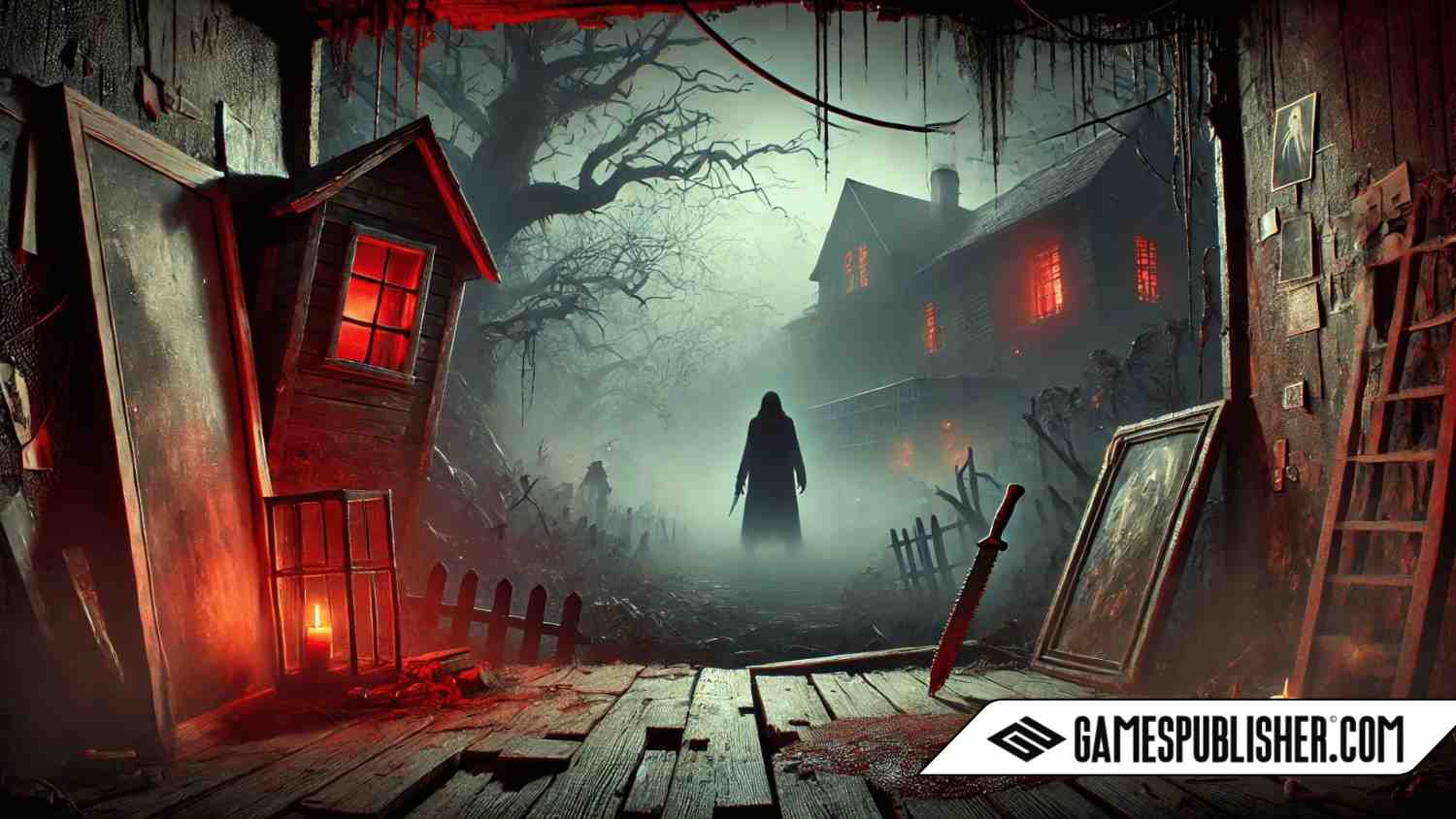Welcome to Gamespublisher.com, your trusted source for news, tips, and insights about game development and publishing. In this article, we’ll talk about the top horror game publishers—companies that make the scariest, most exciting horror games you can play. These publishers have changed the way horror games are made and played, and their work keeps gamers hooked.
If you love horror games or are interested in making them, knowing who the top publishers are and how they shape the genre is important. Let’s explore how these companies create terrifying games that stay with players long after they’ve turned off their screens.
1. The Rise of Horror Games in the Industry
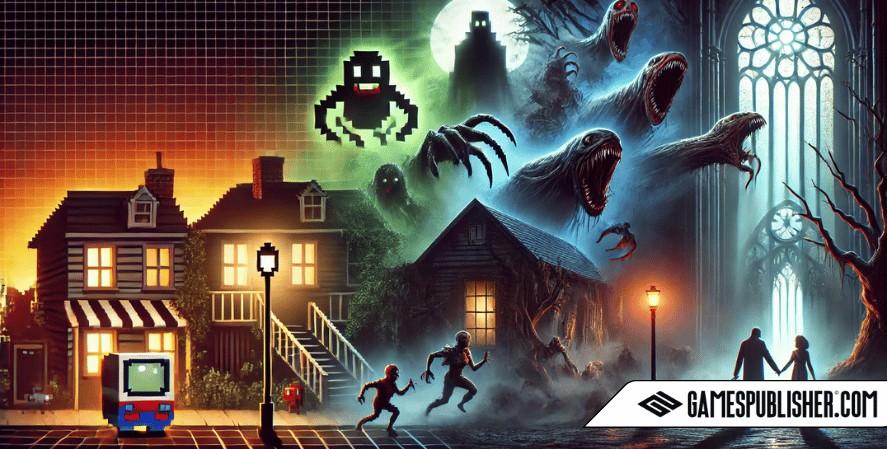
Historical Context
Horror games have a long history in the gaming world. One of the first big horror games was Alone in the Dark (1992), which introduced 3D gameplay and a spooky atmosphere. But the real change came with games like Resident Evil (1996) and Silent Hill (1999).
Resident Evil, made by Capcom, became famous for its survival horror style. Players had to manage their resources carefully while facing zombies and other terrifying creatures. Silent Hill, made by Konami, took a different approach. It focused on psychological horror, with disturbing stories and creepy environments that made players feel uneasy.
Growth in Popularity
In recent years, horror games have become even more popular. Why? Advances in technology have made it possible to create more realistic environments, better graphics, and improved sound. New tools like virtual reality (VR) allow players to feel like they’re really inside the game, making the scares even more intense.
People also want more immersive experiences where they are part of the story. Horror games like PT (a playable teaser for the cancelled Silent Hills) and Hellblade: Senua’s Sacrifice dive deep into emotional and psychological themes. Players are not just scared—they are made to think and feel, which has drawn in a wider audience.
2. Characteristics of Successful Horror Game Publishers
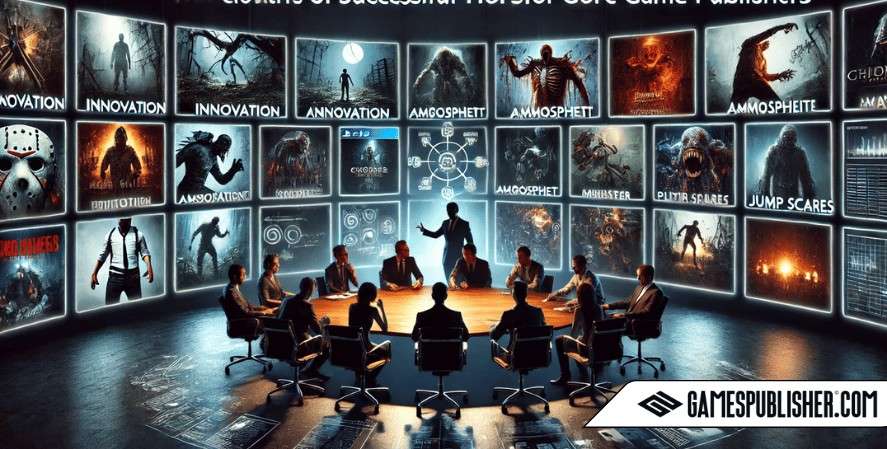
Innovation in Storytelling
Great horror games aren’t just about jump scares—they’re about stories that pull you in. Games like Silent Hill 2 are perfect examples. The game doesn’t rely only on monsters, but instead tells a deep, emotional story about loss and guilt. Publishers that focus on story-driven horror know how to mix scary moments with rich, compelling narratives.
A newer publisher, Bloober Team, makes games like Layers of Fear and The Medium. Their games focus on psychological horror, exploring mental illness and trauma. These kinds of stories make their games more than just scary—they are also thought-provoking.
High-Quality Production Values
Scary games need to look and sound good to be effective. Capcom is well-known for making horror games with great graphics and sound. Resident Evil Village (2021), for example, uses sound effects, lighting, and detailed environments to create a terrifying atmosphere. When everything looks and sounds real, it makes the fear feel real too.
Understanding of the Horror Genre
What makes a game scary? Successful horror game publishers know the answer to this question. They understand both psychological fears (like the fear of being alone) and physical ones (like being chased by a monster).
Publishers like Frictional Games, known for Amnesia: The Dark Descent, remove typical game mechanics like fighting. Instead, players must hide and survive. This helplessness makes the game much scarier because the player feels vulnerable.
3. Notable Horror Game Publishers

Capcom
Capcom is one of the best-known publishers in horror gaming. Their Resident Evil series is famous worldwide for its intense action and creepy environments. They have been pioneers in the survival horror genre, pushing the limits with each new game. Resident Evil Village, the most recent title, continues to set the bar for horror games with its blend of action, story, and survival elements.
Konami
Konami created the Silent Hill series, which is famous for psychological horror. Silent Hill 2, in particular, is often called one of the scariest and most emotional games ever made. Konami has a special talent for making disturbing and eerie environments that stay with players long after the game is over.
Bloober Team
Bloober Team is a newer name in horror gaming, but they’ve quickly made a mark with games like Layers of Fear and The Medium. They focus on psychological horror and mental health themes, often exploring the darker sides of the human mind. Their games are not only about fear but also about emotional depth, making them stand out in the genre.
Frictional Games
Frictional Games became well-known with Amnesia: The Dark Descent, a game that focused on survival through fear and stealth. Players can’t fight—they can only hide. This makes the game feel tense and terrifying. Their later game, SOMA, explores deep questions about consciousness and identity, blending horror with philosophy.
Red Barrels
Red Barrels created the Outlast series, known for its first-person view and found footage style. Outlast is famous for making players feel helpless, forcing them to hide from dangers instead of fighting back. This constant feeling of vulnerability has made the series a hit among horror fans.
4. Emerging Trends in Horror Game Publishing
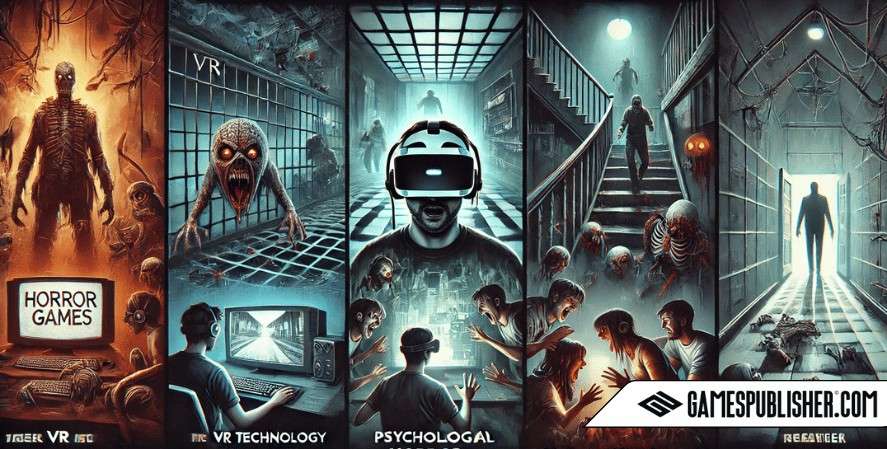
Indie Horror Games
Indie games have changed the horror genre. Small studios are creating unique and terrifying games that don’t need big budgets to scare people. Games like Phasmophobia and Five Nights at Freddy’s became hugely popular, showing that small developers can still make big impacts. Indie horror games often experiment with new ideas, pushing the genre in exciting directions.
Virtual Reality (VR) Horror
With the rise of VR, horror games have reached new levels of fear. VR horror games like Resident Evil 7 allow players to step into the game, making the scares more real and intense. As VR technology improves, more publishers are exploring this immersive medium to create unforgettable experiences.
Narrative-Driven Horror
Recently, we’ve seen a rise in horror games that focus more on story than action. Games like Until Dawn and The Dark Pictures Anthology let players make choices that affect the story’s outcome. This makes players feel like they are part of the horror, not just bystanders.
5. Challenges Faced by Horror Game Publishers
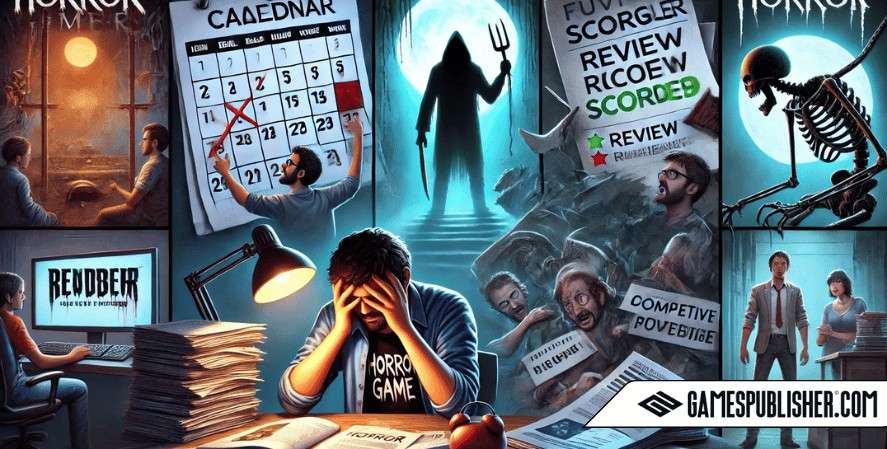
Balancing Fear and Playability
Making a horror game that’s both fun and scary is a tricky balance. If a game is too scary, players may quit. But if it’s too easy, it won’t be scary enough. Publishers like Red Barrels (makers of Outlast) know how to balance fear with playability, giving players just enough control to feel scared, but not helpless.
Maintaining Originality
With so many horror games on the market, it’s hard to come up with new ideas. Many games use similar themes, like haunted houses or zombies. Publishers need to find fresh ways to scare players, like SOMA, which blends science fiction with horror, asking deep questions about identity and existence.
Technological Limitations
Even with today’s technology, there are still limits to what can be done in games. But sometimes, these limits help publishers come up with creative solutions. For example, Amnesia used simple graphics and sound to create an incredibly creepy atmosphere without relying on expensive technology.
6. The Future of Horror Game Publishing
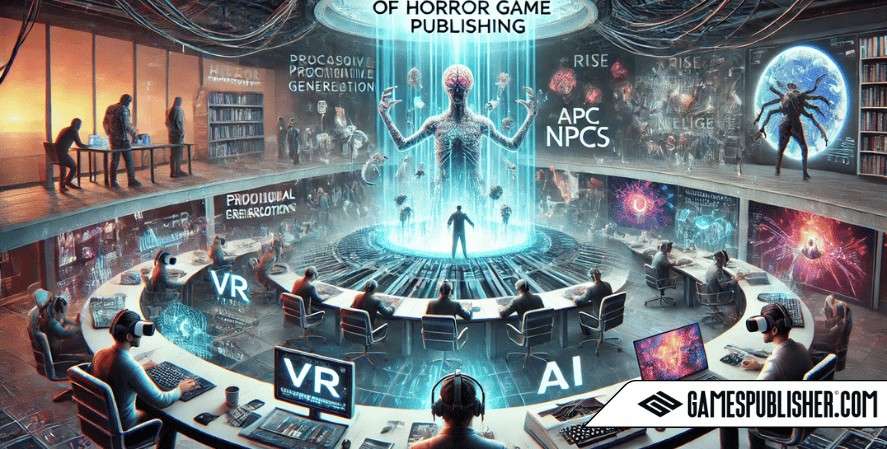
Technological Advancements
As technology continues to advance, horror games will get even scarier. New tools like artificial intelligence (AI) and better graphics engines will allow publishers to create enemies that are smarter and environments that are more realistic. Future horror games could feel even more immersive and terrifying.
Cross-Media Expansions
Horror game publishers are also looking beyond video games. We’ve already seen movies based on games like Resident Evil, but this could expand even more in the future. Publishers might create horror stories that span across games, movies, TV shows, and even books.
Community Engagement
Horror game fans are often very involved in the games they love. Publishers who listen to their community and use their feedback to improve future projects will likely be more successful. Fan engagement will play a big role in the future of horror game publishing.
Conclusion
In conclusion, the top horror game publishers have shaped the genre by creating some of the most memorable and terrifying experiences in gaming history. Capcom, Konami, Bloober Team, Frictional Games, and Red Barrels continue to lead the way in making horror games that both scare and engage players.
As the gaming industry grows and changes, horror games will continue to evolve with new technologies and storytelling techniques. Whether you’re new to the genre or a longtime fan, there are plenty of great horror games to explore. Be sure to check out Gamespublisher.com for more insights, updates, and recommendations on the latest and greatest in horror gaming.
Loading survey...

